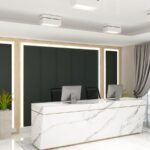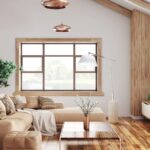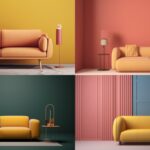In the dynamic realm of retail, the strategic utilization of retail fixtures plays a pivotal role in shaping consumer behaviour and ultimately boosting sales. Retail fixtures encompass various elements that greatly influence how consumers perceive and interact within a retail space. Understanding the profound impact of retail fixtures is essential for retail store owners, managers, interior designers, and industry professionals to create an optimized shopping experience. In this article, we delve into the multifaceted dimensions of retail fixtures, exploring their effects on consumer behavior and presenting best practices for leveraging them to enhance sales.
Understanding the Role of Retail Fixtures
Defining Retail Fixtures
Retail fixtures, often interchangeably termed store fixtures, retail furniture, or merchandise fixtures, constitute an integral aspect of retail design. Retail fixtures are any furniture or equipment used to display merchandise in a retail store. They can be as simple as a shelf or as complex as a custom-made display unit.
Retail fixtures play a vital role in the overall store design and can have a significant impact on consumer behavior and sales. These fixtures encompass shelving, display racks, stands, signage, and other structural elements within a store. They are purposefully designed and strategically placed to showcase products, guide customer flow, and enhance the overall ambiance of the retail space.
Retail fixtures not only serve the functional purpose of organizing and displaying merchandise but also carry significant aesthetic and psychological weight. Their design, placement, and aesthetics can profoundly impact the consumer’s perception and behavior within the store.
The Impact on Consumer Behavior
Retail fixtures wield a significant impact on consumer behavior, influencing their shopping habits, purchase choices, and overall contentment. When harnessed effectively, these fixtures elevate the shopping journey, prolong customer stays, and spur on impromptu purchases.
Strategically positioning products and crafting visually enticing displays can captivate consumers, enticing them to delve into and interact with the displayed items. Additionally, the arrangement and aesthetics of retail fixtures can elicit specific emotions and impressions, guiding customers towards intended behaviors. Well-structured and easily accessible fixtures aid customers in swiftly locating desired products and also encourage them to explore other items of potential interest.
The Psychology Behind Retail Fixtures
Influence of Colours and Lighting
Colours and Emotional Responses
Colours play a crucial role in the psychology of retail design and significantly impact consumer emotions and behaviours. Bright and vibrant colours can create an energetic and lively atmosphere, fostering a sense of excitement and urgency to buy. Conversely, softer tones can induce a feeling of calmness and relaxation, encouraging a leisurely exploration of the store.
Strategic use of colours on retail fixtures can evoke desired emotional responses that align with the store’s brand image and the intended shopping experience. For instance, warm tones like red and orange may evoke a sense of urgency and passion, while cool tones like blue and green can convey trust and tranquillity.
Lighting and Space Perception
Lighting is another critical aspect of retail design that profoundly affects how consumers perceive the store and its offerings. Well-planned lighting can enhance the ambiance, accentuate products, and influence the perception of space.
Adequate and strategically placed lighting on retail fixtures can highlight specific products, create focal points, and guide consumers through the store. Additionally, proper lighting can affect mood and ambiance, setting the tone for the shopping experience.
The Importance of Fixture Placement
The Strategic placement of retail fixtures within the store layout is fundamental to shaping consumer behaviour and optimizing sales. Retail designers carefully consider the positioning of fixtures to create a seamless and intuitive shopping journey for consumers.
By strategically placing high-demand or new products in prime locations, such as near the entrance or at eye level, retailers can maximize their visibility and draw consumers’ attention. Moreover, thoughtful placement of fixtures can facilitate a smooth flow of traffic within the store, preventing congestion and ensuring a pleasant shopping experience.
Guiding the Customer Journey with Retail Fixtures
Strategic Product Placement
Retail fixtures play a vital role in guiding the customer’s journey through the store. Placing complementary products adjacent to each other can encourage cross-selling and upselling opportunities. Moreover, arranging products in a logical sequence or grouping them by themes can facilitate an organized and enjoyable shopping experience.
Retail designers often utilize a “store within a store” concept, creating dedicated sections or zones for specific product categories. This approach helps in targeted merchandising, allowing customers to find what they need efficiently.
Creating an Effective Decompression Zone
The entrance area of a retail store, known as the decompression zone, is a critical space that sets the initial impression for consumers. Retail fixtures in this zone should be strategically designed to capture attention, introduce the store’s theme or promotions, and guide consumers into the store.
Well-designed fixtures in the decompression zone should create a smooth transition from the outside environment to the store’s interior, easing consumers into the shopping experience and enticing them to explore further.
Retailers can also use retail fixtures to create a decompression zone for customers. This is a space where customers can relax and take a break from shopping. For example, retailers may place a seating area near the checkout counter or create a dedicated space for children to play.
Best Practices for Using Retail Fixtures to Boost Sales
Optimizing Visibility and Accessibility
Visibility and accessibility of products are paramount in influencing purchase decisions. Retail fixtures should be designed and positioned to maximize product visibility and accessibility for consumers.
Placing popular or high-margin products at eye level or within easy reach can significantly impact sales. Additionally, ensuring that fixtures are well-lit and uncluttered further enhances the visibility of products, making them more appealing to customers.
Leveraging Retail Fixtures for Product Highlighting and Impulse Buying
Retail fixtures provide a prime opportunity to highlight featured products and promote impulse buying. Eye-catching displays, interactive fixtures, and well-designed signage can draw attention to specific products and promotions.
Strategically positioning impulse buy items near checkout counters or incorporating attractive displays at key points in the store can encourage last-minute purchases, thereby boosting overall sales.
In conclusion, retail fixtures are a fundamental component of store design that holds immense potential to shape consumer behaviour and drive sales. We at Tradegully understand the psychological and strategic aspects of retail fixtures, we help retailers optimize their use to create an inviting, engaging, and profitable retail environment. Incorporating best practices, such as strategic product placement, effective use of colours and lighting, and optimizing visibility, can empower retail store owners and managers to harness the full potential of retail fixtures in enhancing the shopping experience and ultimately boosting sales.
FAQs
What are the 4 elements of retail?
- Product: The goods or services offered to customers.
- Price: The cost at which the product is sold, considering factors like discounts.
- Place: The location where the product is sold, which could be a physical store or online.
- Promotion: The strategies used to make the product known to customers, such as advertising or social media campaigns.
Together, these four elements form the foundation of a successful retail marketing plan.
What are the 4 main types of store layouts?
The 4 primary types of store layouts are:
- Grid Layout: Organized in parallel aisles, great for grocery or retail stores where customers may need to navigate through multiple aisles.
- Herringbone Layout: Aisles converge at a focal point, directing customer attention toward promotional displays or high-margin items.
- Loop (Racetrack) Layout: A continuous pathway directs customers around the store, encouraging them to pass by every section.
- Free-Flow Layout: Flexible arrangement of fixtures and aisles, often found in boutiques and specialty shops, where creativity and atmosphere are important.
Each layout has its own advantages and suits different retail environments. Choose based on your store’s specific needs.
What is a four way fixture in retail?
A four-way fixture is a retail display unit designed to maximize product visibility while saving floor space. It has four sides, allowing a variety of similar or different items to be displayed in close proximity. The 360-degree design not only enhances customer engagement but also makes it easier to browse, leading to increased sales opportunities. Ideal for showcasing a range of merchandise, the four-way fixture is a versatile and efficient solution for any retail setting.






